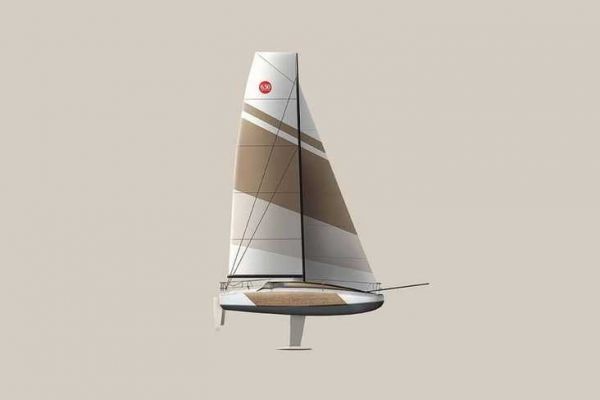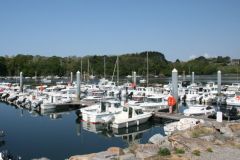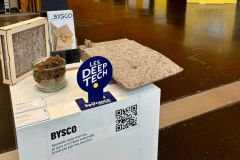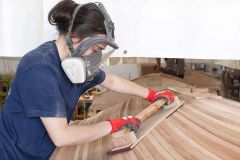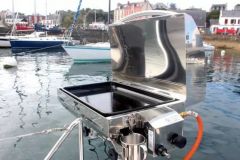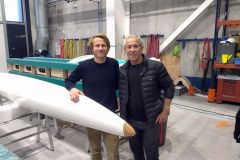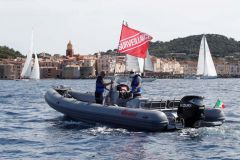Theoretical research on a more sustainable Mini 6.50
As part of its activity, François Gabart's company Mer Concept, devotes part of its time to research, particularly with the aim of reducing the environmental impact of sailing and ocean racing. With a number of partners, including Ifremer laboratories, GSea Sesign, the architect Sam Manuard and the Life Cycle Assessment specialist Quantis, the company has worked on reducing the impact of a Mini 6.50. Fanny Ioos, materials engineer, explains: "We started by doing an impact analysis on the construction of the boat and its use for 2 years, then given our business, we focused on the construction. Considering a fiberglass production Mini, the most important emissions are due to materials and production waste. So we looked at alternatives in terms of materials."
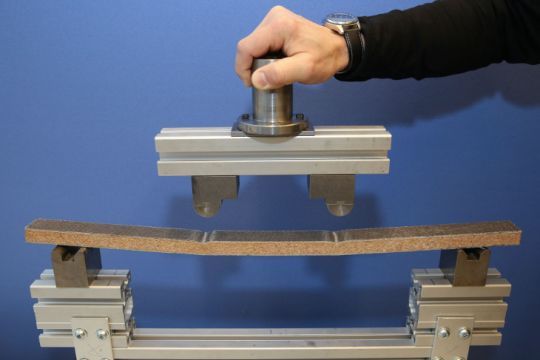
A Mini 6.50 in linen sandwich
In its specifications, the study obviously wanted the boat to remain competitive in races. It therefore had to keep an equivalent mass and the same mechanical properties so that racers could adopt it. Fanny Ioos explains how the choice of potential materials was made: "They had to be accessible both in volume, cost and reliability. So we came up with sandwiches made of flax or bamboo fibers, with cork or recycled PET foam cores, with an epoxy resin. In terms of resin, we did not have the necessary hindsight on the large-scale recyclability of thermoplastic resins. The most successful version is linen, PET and biobased epoxy."
A measurable gain in emissions
The result is conclusive for Mer Concept, for whom these materials can be used in a relevant way in ocean racing. With equivalent performance, the weight only increases by 4%. Fanny Ioos adds: "This is within our tolerances, achievable and validated by the architect and the design office. We estimate between 20 and 25 percent reduction in CO2 equivalent emissions, but it's always important to be careful with these figures, as other aspects of environmental impact are not taken into account, such as soil eutrophication or rare metal use."
The study has led to the publication of a scientific article. Mer Concept hopes that it will benefit builders and construction sites, and that it will be a basis for exchange for eco-design. Fanny Ioos concludes: "Our goal is for it to serve as much as possible."

 /
/ 